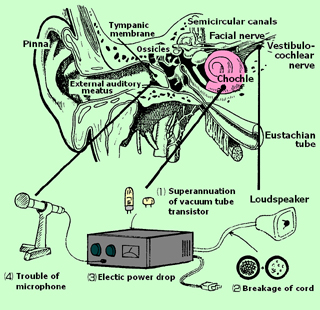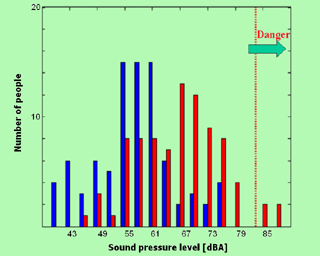What is Hearing Loss ?
Although the aging of ears is different for each individual,
it commonly starts from one's forties and rapidly becomes
worse in one's sixties. It becomes especially difficult to perceive
high-frequency sounds. In addition, even if the sound can be heard,
understanding it doesn't often go well.
The structure of ears can be modeled as shown in the right figure.
The sound is not sufficiently transmitted due to the malfunction of each part,
therefore, the loudspeaker can’t emit the sound as expected. In presbycusis especially,
it is characteristic that the cochlea suffers from great disorder.
|

|
Noise and Hearing Loss
Hearing loss also occurs when hearing loud sounds for a long time.
Therefore, we investigated at which volume a sample of people usually listened
music using loudspeakers. In addition, we investigated the volume
at which they really wanted to listen to the music.
As a result, there is a possibility that the individuals' hearing acuity suffers
from listening to music at their desired volume for a long time.

Blue:The volume individuals usually listen to music
Red :The volume at which they wanted to listen to music
On the right side of the red line, the volume can possibility cause noise induced hearing loss if listened to for a long time.
Fig. Usual listening volume of music using loudspeakers
New word intelligibility test to evaluate speech hearing ability
|